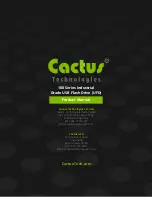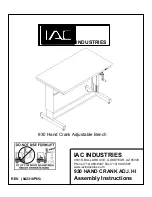Reviews:
No comments
Related manuals for StorageWorks 2000 Series

100 Series
Brand: Cactus Pages: 27

930
Brand: IAC INDUSTRIES Pages: 8

6045 Series
Brand: Data General Pages: 58

StorVize V7000 Gen2
Brand: IBM Pages: 188

STD2401LW
Brand: Quantum Pages: 88

DS3611xs
Brand: Synology Pages: 26

UltraDock v5
Brand: WiebeTech Pages: 8

HG61M0643
Brand: HOGYME Pages: 31

Travelair-AC
Brand: Asus Pages: 32

EHD-A1T
Brand: Asus Pages: 40

WL-HDD
Brand: Asus Pages: 58

FrontLinker
Brand: Asus Pages: 10

Zendisk AS400
Brand: Asus Pages: 8

Leather External HDD USB 3.0
Brand: Asus Pages: 2

FlexSave
Brand: Asus Pages: 14

Travelair N
Brand: Asus Pages: 21

AN200 External HDD
Brand: Asus Pages: 2

AR200
Brand: Asus Pages: 24

















